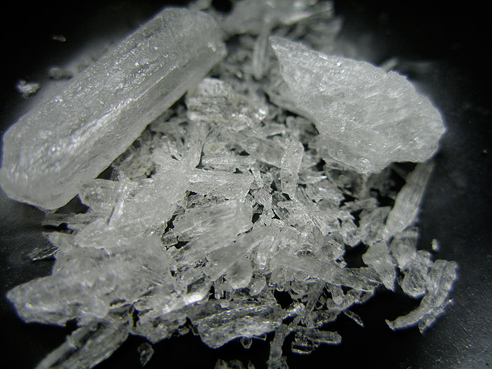Drugs and the law: The methamphetamine problem
A Lunchtime Seminar Series Summary
By Pota Forrest-Lawrence
1 August 2011
On July 12 CCR Research Assistant Pota Forrest-Lawrence spoke at the Lunchtime Seminar Series 2011, presenting ‘Drugs and the Law: The Methamphetamine Problem’.

On 20 March 2006, the Four Corners report ‘Ice Age’ was broadcast on Australian television. It provided a provocative and disturbing insight into the lives of those addicted to methamphetamines. What followed was an intense media campaign on methamphetamine, and an eagerly responsive policy and legislative agenda by both the NSW and Commonwealth Governments which attempted to address the ‘methamphetamine problem’ and provide appropriate policy and regulatory solutions. The drug’s high purity level coupled with its associated harms elevated its status to one that required immediate attention.
The ‘methamphetamine problem’ first emerged in Australia in late 2000, coinciding with an apparent shortage in heroin. Estimates in 2003 of regular and dependent methamphetamine users in Australia reached 175,300 (McKetin et al. 2005). The National Drug Strategy Household Survey, however, noted that methamphetamine use amongst the general public had decreased from 3.2% (0.5 million) in 2004 to 2.3% (394,800) in 2007.
Throughout 2006, newspapers around Australia intensely reported on the apparent methamphetamine ‘problem’. Headlines such as ‘Health experts warn of ice “epidemic”’ (ABC Online, 20 March 2006); ‘Ice a worse problem than heroin’ (The Australian, 25 September 2006); and ‘Ice becoming teen party drug’ (The Australian, 27 September 2006) occupied the front pages of major Australian newspapers.
The NSW Government responded to the ‘methamphetamine problem’ by hosting the National Leadership Forum on Ice on 20 December 2006. Resolutions focusing on evidence based research, education and prevention, rehabilitation and treatment, and the manufacture of methamphetamines were the major outcomes of the Forum.
Legislative changes were made in 2006 to the Drug Misuse and Trafficking Act 1985 banning the supply and display of water and ice pipes (s11A); 2007 changes to the Act banned the possession of certain precursors and apparatus used in the manufacture of illicit drugs. The Drug Misuse and Trafficking Regulation 2006 was a major legislative initiative, listing a number of prohibited precursors (ephedrine, hydriodic acid and pseudoephedrine) under s24A clause 10. The Poisons and Therapeutic Goods Regulation 2008 lists cold and flu tablets containing pseudoephedrine as Schedule 3 drugs. These legislative responses by the NSW Government demonstrate an obvious focus on chemical precursors and related apparatus used in the manufacture of methamphetamines.
On a Commonwealth level, Project STOP was rolled out nationally in April 2007. It attempted to stop ‘pseudo runners’ from accumulating enough pseudoephedrine-based products to manufacture methamphetamines. The 2007 National Precursor Strategy introduced a number of responsive measures including the National Clandestine Laboratory Database and regulatory restrictions on the sale of pseudoephedrine based products. Other 2007 initiatives included a Commonwealth inquiry into the manufacture, importation, and use of amphetamines, and the third wave of national media campaigns targeting ice and speed.
The enactment of the Law and Justice Legislation Amendment (Serious Drug Offences and Other Measures) Act 2005 (the SDO Act) on 5 December 2005 introduced offences for the import, export, manufacture or possession of precursors; it identified pseudoephedrine as a prohibited precursor. This Act also targeted domestic amphetamine type stimulant (ATS) manufacture by creating new offences targeting dealings in precursor chemicals. It also significantly increased the penalties for existing federal drug offences and enhanced national law enforcement capabilities between federal drug laws and the laws of state and territories.
Both the NSW and Commonwealth Government initiatives demonstrate the intense focus on the possession, manufacture and distribution of methamphetamine related precursors. Increased penalties, the creation of new offences and the implementation of a number of policy measures were evident responses to the supposed ‘methamphetamine problem’. The ‘Ice Age’ report heralded the beginning of media attention on the issue and possibly played an influential role in policy decision-making on both a state and federal level. However, whether Government reaction to the methamphetamine issue was triggered by media reports is certainly an avenue I will be exploring in more detail in my thesis.
References
McKetin, R., McLaren, J., Kelly, E., Hall, W. and Hickman, M. (2005), Estimating the number of regular and dependant methamphetamine users in Australia, In NDARC Technical Report no. 230 National Drug and Alcohol Research Centre, Sydney.
[ Image Credit (opens in a new window)]